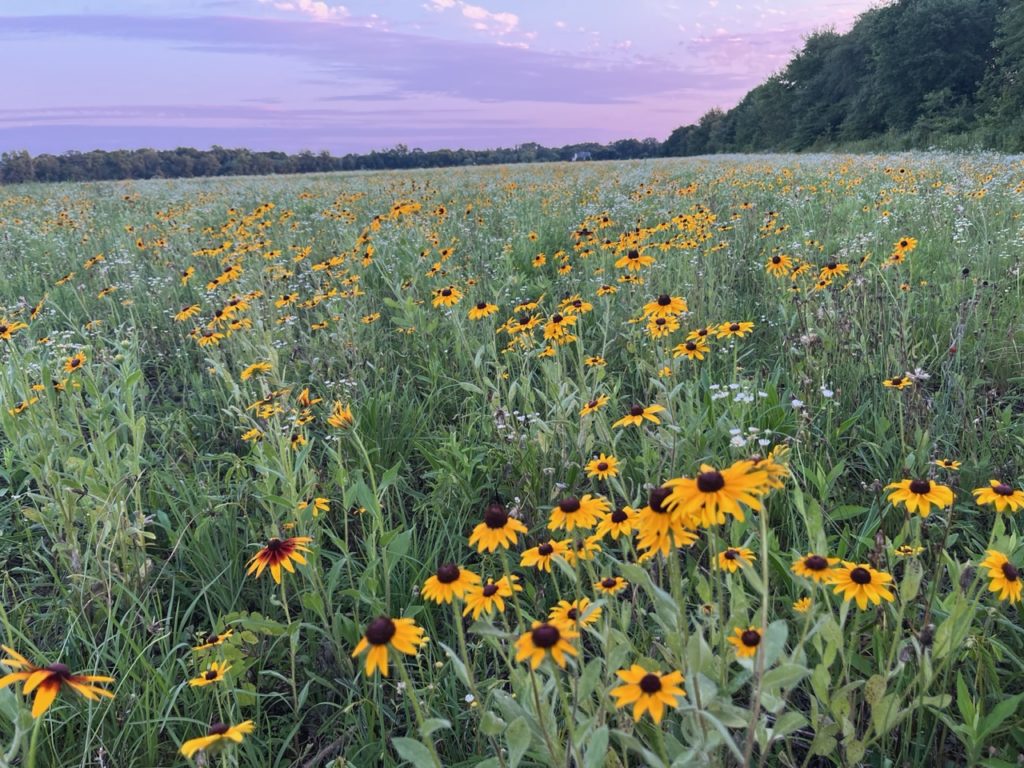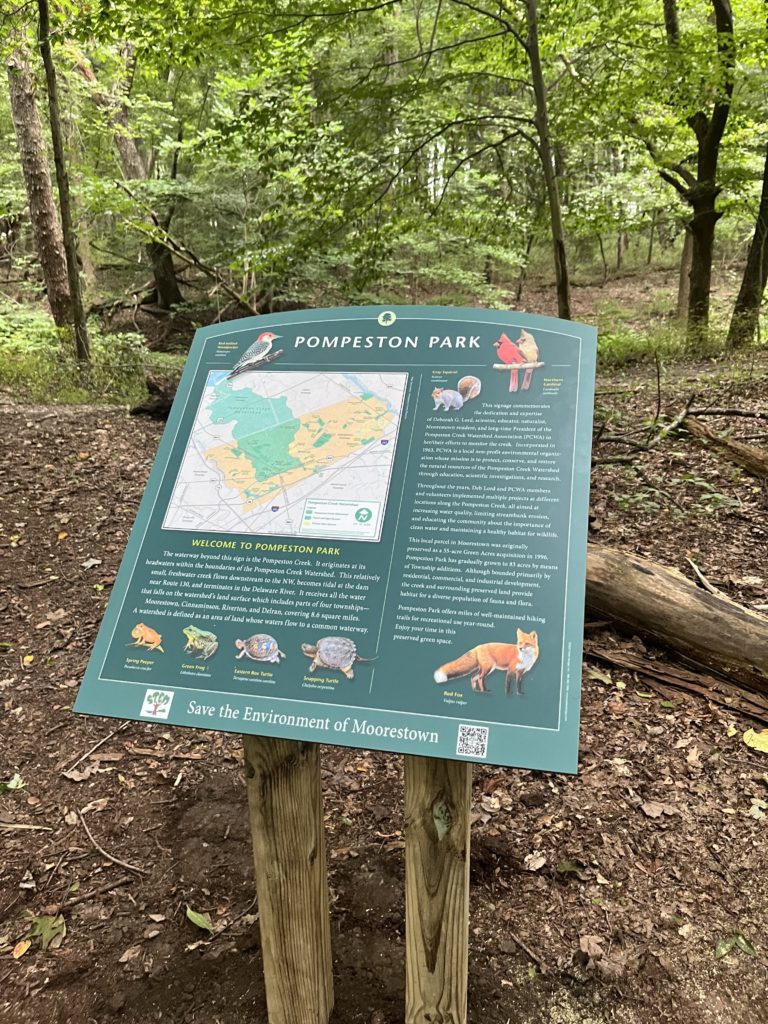
People who stop by Moorestown’s Swede Run Fields Dog Park with their pets will see the pollinator garden’s Black-eyed Susans; Coneflowers; and Goldenrods, among other plants in bloom.
Now in its third year, the native pollinator garden adjacent to the dog park is well established and the plants don’t need watering. This summer, Save the Environment of Moorestown (STEM) sold some of the garden’s native plants on Moorestown Day.
According to STEM’s Facebook page, once established, native pollinators require little work and come back year after year.
“There definitely seems to be more of an interest … People are gaining more of an interest in natives, and when you walk through here (the garden), you can see how many bees are in here,” said Mark Pensiero, STEM president. “ … It’s totally filled in. It’s hard to believe that these were all two-inch plugs when we planted them three years ago.”
The Facebook page also noted how the number of Monarch butterflies visiting the garden will soon increase, and they’ll use the land’s two species of Milkweed – common and butterfly – to lay their eggs. They in turn will grow into caterpillars, and into the next generation of Monarch butterflies, and will migrate to Mexico for the winter.
“The number of bees and butterflies and birds (Goldfinches, Song Sparrows and Red-winged Blackbirds) that utilize this space, it’s really amazing,” Pensiero noted. “This is a good spot for migrating birds. It’s a big, open space so a lot of Sparrows will utilize it.”

The big field across the street from the garden is now in its second growing season and has lots of Black-eyed Susans, Lanceleaf Coreopsis, Gaillardia and Plains Coreopsis in bloom. It’s also seen birds that included Barn Swallows and Mourning Doves, among others.
The field was mowed in June to cut back invasive plants before they got to seed. Mowing helps native plants by giving them access to more sunlight and reducing the invasive seed bank. Pensiero shared an update on enhancements to the field.
“Part of the original plan called for some enhancement of wetlands,” he explained. “That’s what they call vernal pools in this property; vernal pools only have water in them typically in the winter and the spring, then they dry up in the summer.”
Pensiero pointed out that vernal pools are good breeding grounds for toads and salamanders, among other amphibians, and are also important for migrating shorebirds. The U.S. Fish and Wildlife Service, which partnered with Moorestown Township and STEM to turn the 75-acre parcel into a meadow of native grasses and pollinator plants, has completed the mapping of the project and is in the process of putting the wetlands together.
“ … Once we have all the paperwork done, U.S. Fish and Wildlife Service will come up with some equipment and just basically enhance and maybe make them a little bigger, so they have more value,” Pensiero noted. “That will be something that will just add more value to this big field, which I think just looking at it, how pretty it is, and it’s going to become even more and more beautiful, I think, over the coming years.”
STEM recently installed a memorial sign at Pompeston Park that honors the late Deborah Lord, a scientist, educator, naturalist, Moorestown resident and president of the Pompeston Creek Watershed Association (PCWA). She was also involved with STEM for many years.
“We wanted to honor her, and we put the word out that we wanted to raise money to put a bench in, and we put a beautiful bench in Pompeston Park,” Pensiero recalled. “We were so successful, and people were so generous, that … we said, ‘Let’s do a sign that honors Debbie but also is informative and can provide people with some information about the Pompeston Creek Watershed, as well as the type of wildlife that you would find out there.’”
Pensiero hopes to see more grasses next year, but he’s happy with the garden’s flowers.
“It’s really exciting,” he enthused. “Next year, hopefully we’ll have this enhanced wetland area, which will add a whole other thing to this area to promote wildlife, and particularly wildlife that migrates.”


